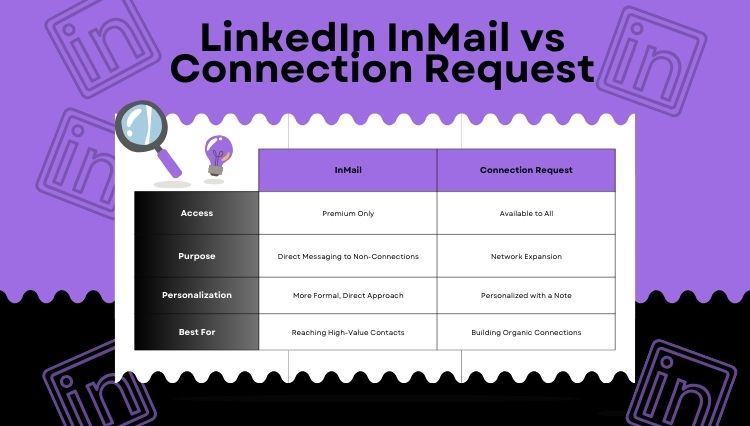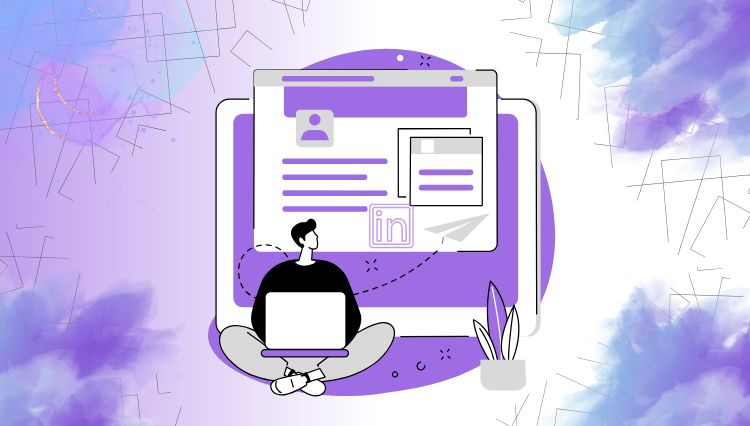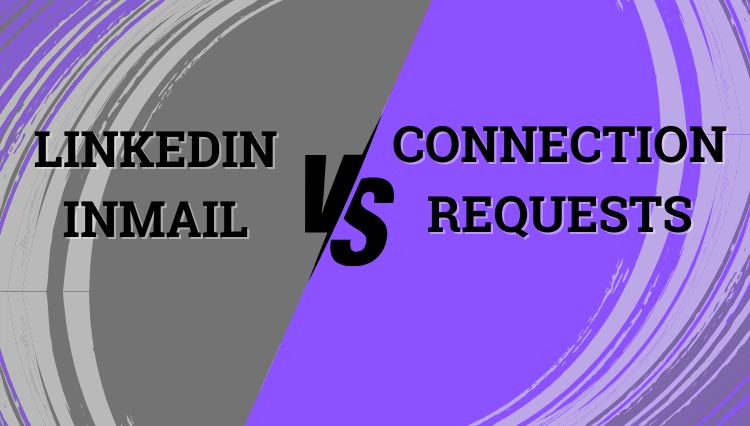When reaching out to others on LinkedIn, users often wonder whether to use InMail or send a Connection Request. Although both serve as methods to connect, they each have unique purposes and fit different outreach goals. While LinkedIn InMail is a direct messaging tool available only for Premium users, Connection Requests are free and allow you to add people directly to your network. Deciding when to use each can impact how effective your outreach is on LinkedIn.
As a LinkedIn automation expert, Leadoku will dive into the key differences between LinkedIn InMail vs Connection Requests, helping you understand when to use each for the best results.
What is LinkedIn InMail?
InMail is a messaging feature available to LinkedIn Premium users that allows you to reach out to people you’re not directly connected with. Think of it as LinkedIn’s exclusive way for users to message potential leads or professional contacts without waiting for a Connection Request to be accepted. InMail is particularly helpful when you need to reach someone who may not know you but could be valuable to your network or business.
When to Use InMail
InMail is best for reaching out to specific, high-value leads, particularly in B2B contexts. For instance, if you’re aiming to contact someone in a senior role at a company you wish to collaborate with, an InMail message can help you get in touch without needing a mutual connection. InMail’s exclusivity can also make your message stand out, as it’s not as common as Connection Requests.
To make InMail work effectively, LinkedIn users should also be aware of how strategic InMail usage can enhance their Social Selling Index (SSI) score, a key factor in LinkedIn’s social selling metrics. Keeping an eye on your LinkedIn SSI score can provide insight into how well you’re connecting with the right audience on LinkedIn and enhancing your professional brand.

What is a LinkedIn Connection Request?
A LinkedIn Connection Request is an invitation to add someone to your network. Unlike InMail, it doesn’t require a Premium account and is available to all LinkedIn users. When you send a Connection Request, the recipient has the option to either accept or ignore it. Once they accept, you’re connected on LinkedIn, and you can freely communicate through regular LinkedIn messages.
When to Use Connection Requests
Connection Requests work best when you’re looking to grow your network organically. This is often a more casual approach than InMail, especially if you’re aiming to connect with people in similar industries or with shared interests. Sending personalized Connection Requests can be a highly effective way to build meaningful connections on LinkedIn.
If you’re wondering how to connect on LinkedIn without InMail, Connection Requests are your go-to option. By crafting a friendly and personalized message in your invitation, you can increase the likelihood of acceptance and start building a network based on mutual interests and trust.
LinkedIn InMail vs Connection Request: Key Differences
Knowing the main differences between LinkedIn InMail and Connection Requests helps you decide when to use each effectively. Here’s a closer look at some key distinctions:
Accessibility
InMail is exclusive to LinkedIn Premium accounts, which makes it an ideal choice for reaching out to individuals you don’t share a connection with. In contrast, Connection Requests are available to everyone, allowing free LinkedIn members to expand their networks without needing a paid plan.
Effectiveness in B2B Outreach
For B2B professionals, the choice between InMail and Connection Requests can significantly impact outreach results. InMail can be particularly useful when approaching senior decision-makers, as these messages tend to appear more formal and direct. However, Connection Requests often work well for those seeking to build a network organically or establish relationships with industry peers.
Using InMail wisely is crucial, especially in fields that involve LinkedIn automation. Note that automation tools should be used cautiously to avoid crossing LinkedIn’s usage policies. For safe practices, refer to this automation warning on LinkedIn to understand how automation can complement organic networking efforts.
Message Reach and Response Rates
InMail has the advantage of delivering your message to recipients who are more likely to engage since they know it’s sent by a Premium user. However, personalized Connection Requests can yield high response rates as well, especially when they contain a thoughtful message that resonates with the recipient’s interests. Generally, Connection Requests can feel more personal, especially when they’re customized.

When to Use LinkedIn InMail and When to Use a Connection Request
Choosing the right method for your outreach can make a big difference in building strong professional relationships on LinkedIn. Here are some recommendations:
- Use InMail when reaching out to high-level contacts or when you don’t have a shared connection. InMail messages are more likely to catch the attention of busy professionals due to their exclusive nature. This is also helpful for cold outreach where immediate response is valuable.
- Use Connection Requests to grow your network with peers or contacts in similar industries. If you add a personal note in the request, you can increase the likelihood of getting a positive response and foster a connection that may lead to future collaboration.
If you’re looking to balance connection efforts with automation, be cautious about LinkedIn’s policies to avoid account restrictions. Strategic, genuine engagement is often the best approach for long-term networking success.
How to Connect on LinkedIn Without InMail
If you want to connect on LinkedIn without using InMail, there are several effective strategies to consider:
- Send a Personalized Connection Request: When sending a Connection Request, include a brief note that explains why you’d like to connect. Mention something you have in common or a shared interest to make the request feel personal and relevant.
- Engage with Their Content First: Before reaching out, interact with the person’s posts or articles. Commenting on or liking their content can make them more receptive to your Connection Request since they’ll recognize you when you reach out.
Using these approaches, you can still create valuable connections without needing a Premium account or access to InMail.
FAQ: Common Questions About LinkedIn InMail and Connection Requests
What is the purpose of LinkedIn InMail?
InMail allows LinkedIn Premium users to message people they aren’t directly connected with. This feature helps expand outreach to new contacts without waiting for a Connection Request to be accepted.
Can you connect with someone on LinkedIn without using InMail?
Yes, you can connect with people on LinkedIn by sending a Connection Request. Adding a personalized note to your request can increase the chances of it being accepted.
How many InMails can you send on LinkedIn?
The number of InMails depends on the Premium plan you’re subscribed to, with each plan offering a specific number of InMails per month.
Is it better to send InMail or a Connection Request?
Both have their advantages depending on your goal. InMail is best for targeted outreach to people you don’t know, while Connection Requests are great for building a network organically.
The Final Verdict
LinkedIn InMail and Connection Requests both serve as valuable tools for expanding your professional network, but they’re most effective when used strategically. InMail offers a direct approach for reaching out to contacts without a prior connection, while Connection Requests help grow your network organically. Choose the method that best aligns with your goals and you can build stronger relationships on LinkedIn and maximize your platform success.

